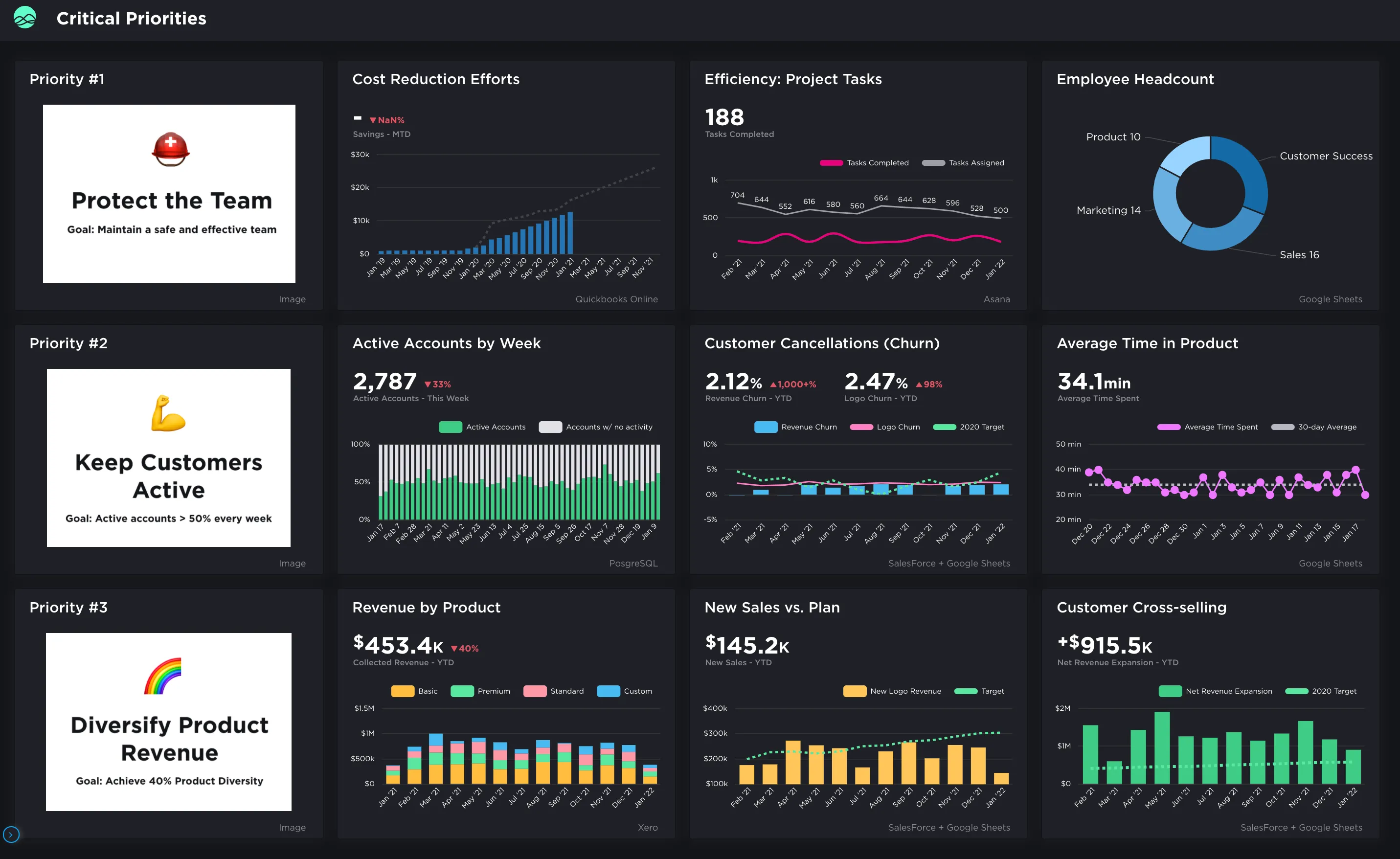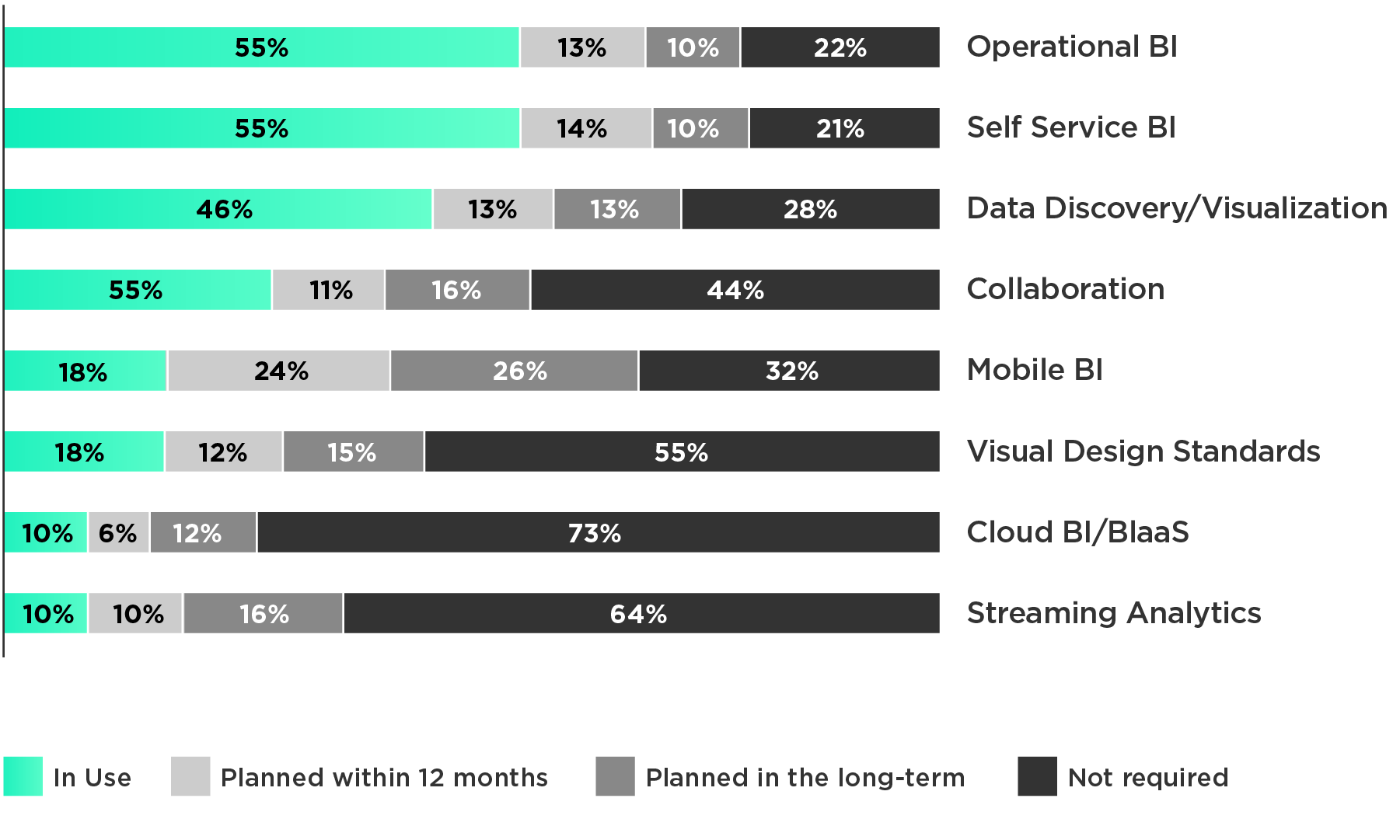It only takes 5 seconds to get the main idea from any piece of information. Don't you think a business analytics dashboard should be the same?
Business Intelligence software vendors who have worked on dashboards for months have a very different view of the business analytics dashboard. For them, it's made up of many different parts, each of which does a specific job.
Most people think of BI dashboards as a single screen full of widgets, elements, numbers, and other information, but this is not always the case.
"How would you feel if you looked at a screen that updated stock prices all the time? Boring and discouraging. Right?"

Now, look at all these Critical Priorities charts by Grow. Are they easy to read?
If your BI reporting tools show too much information or allow too many interactions, you might want to split it up into different views. You'd be surprised at how much better and more useful something as simple as this can make it.
Best Practices for UX for creating BI Dashboards
#1: Find Out What You Need
Business analytics software gives organizations clear, data-driven answers to their most pressing problems.
As per BARC's survey, 55% of Business Intelligence (BI) users say they are into self-service BI, and another 24% say they plan to do so in the future.
Let's look at these BI trends with their unique needs.

Self-service BI is being used much more than other current trends like collaborative BI (29% of users) and mobile BI (18% of users). All of these receive equal attention from the media and marketing from Business Intelligence software vendors.
Ultimately, everything comes down to WHAT YOU NEED and not what the providers offer.
#2: Know Who You're Talking To
A busy salesperson needs to see the most important Key Performance Indicators (KPIs) at a glance. Straight facts and figures! Modern BI reporting tools that help leaders summarize the raw data into meaningful insights are the ultimate catch.
Likewise, the best business analytics dashboard should begin by thinking about its users. If you don't know much about your audience, it's a good idea to sit down with Business Intelligence software vendors and discuss what's important for your BI users.
#3: Highlight The Most Important Details.
To get the most out of your BI dashboard, you should put the most important insights front and center, just like a reporter would with an article.
Use the inverted pyramid method to put the most helpful information first and then comes the next important. Just like the Executive Sales Summary in the above figure, where the total revenue, quantity, and the average price comes at the top.
Your business analytics software users should be able to get the most critical information from a dashboard swiftly without having to wade through a lot of extra information. This way, it accomplishes its primary goal of making the user's work easier.
The dashboard should guide users to the right metrics and trends by using visual cues like positioning and color palette to highlight essential points and downplay unimportant ones.
#4: Use Your BI’s Data Visualization Wisely
Sometimes, the most visually appealing way to show data isn't the best way to convey the message. It is known that everyone loves a good pie chart, but that doesn't mean that a pie chart is the best way to show everything.
There are four main types of data that are usually shown in visuals:
- Relationship: identifies a link between three or more factors e.g., Scatter diagrams, spider charts, and bubble charts
- Comparison: side-by-side comparison of two or more factors (e.g., Line graphs, tables, and bar charts)
- Composition: depicts how separate factors affect the whole (e.g., bar chart, area chart, pie chart, donut, and waterfall chart)
- Distribution: provides a breakdown of how the variables are split (e.g., line graphs, histograms, and scatter plots)
Think about the different kinds of visualizations and decide which one fits your data the best.
It will help if you experiment with your business intelligence tool to determine the most appropriate visualization. Choosing the proper data visualization can be daunting, but some business analytics software has a wizard or AI-powered assistant to guide you through the process.
Closing Words
Dashboards are all about making things easy for users. They are simple to make, use, understand, and spread. Sticking to these rules will make it easier for you to make BI dashboards with good UX.
Grow's well-designed business analytics dashboard makes it easy for its users to look at data and figure out what to do with it.
With their data-centric analytics dashboard solutions, Grow helps -
- Give greater information access to employees.
- Inform stakeholders about the company's overall performance
- Keep managerial expectations in check.
Get a Free trial and experience data-transformation for yourself!







